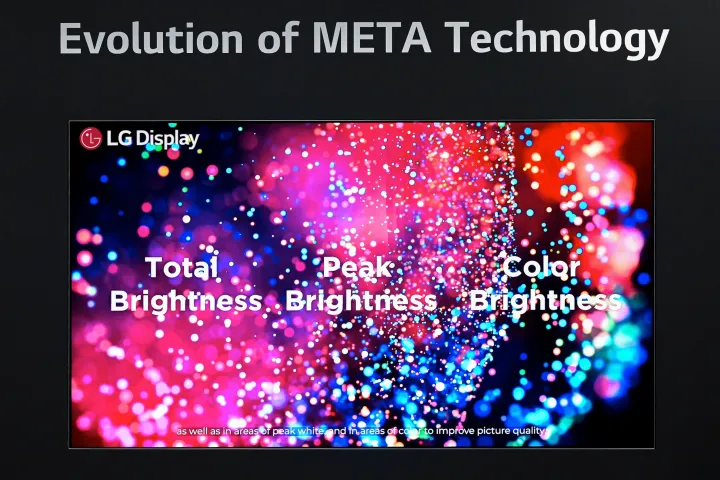LG's G4 OLED could hit 3000 nits max brightness thanks to new MLA tech
LG's 'META Technology 2.0’ is said to bring the brightness

Information released by LG suggests the G4 we saw at CES 2024 will be much brighter than the G3, thanks to the brand’s new MLA (Micro Lens Array) TV panels.
The G4 is set to include LG's new 2024 MLA panel, also referred to as ‘META Technology 2.0’. This comprises the trio of ‘Micro Lens Array Plus (MLA+),’ ‘META Multi Booster,’ and the new internally developed ‘Detail Enhancer’, which is designed to emphasise full-range brightness details.
‘META Technology 2.0’ has a reported maximum brightness of 3000 nits, matching the peak brightness that Samsung has claimed for its QD-OLED S95D. LG Display states that MLA+ can achieve improved colour brightness of up to 1500 nits, which is 114 per cent brighter than conventional OLEDs.
2000 nits was the figure both brands were claiming as their peak last year, so it looks like they are still punching at the same weight in a bid to keep up. Until we get the upcoming models from LG and Samsung in for testing we can only speculate which will come out on top.
The LG G3 TV marked the arrival of MLA technology at CES last year. LG Display’s use of Micro Lens Array has meant that its OLED TVs have reached dazzlingly bright heights this year.
In a nutshell, MLA is made of a layer of microscopic lenses that are layered on top of the OLED pixels. To contextualise how microscopic these lenses are, LG Display claims that it can fit 5000 microlenses on a single pixel.
It is also worth noting that just because a TV panel can go that bright, it doesn’t mean it always be able to do so consistently. This is what we noticed with the Panasonic MZ2000 which didn’t always appear as bright and dynamic as other sets with MLA we have tested.
Get the What Hi-Fi? Newsletter
The latest hi-fi, home cinema and tech news, reviews, buying advice and deals, direct to your inbox.
The second-generation MLA OLED panels will be available in 55, 65, 77, and 83-inch models. So far, it has been announced that LG’s G4 and M4 will both use this panel, as will Panasonic’s 55 and 65-inch Z95A.
MORE:
Best OLED TV 2024: the latest and greatest models, rated and ranked
Ainsley Walker is a staff writer at What Hi-Fi?. He studied music journalism at university before working in a variety of roles including as a freelance journalist and teacher. Growing up in a family of hi-fi enthusiasts naturally influenced his interest in the topic. Outside of work, Ainsley can be found producing music, tinkering with retro tech, or cheering on Luton Town.
